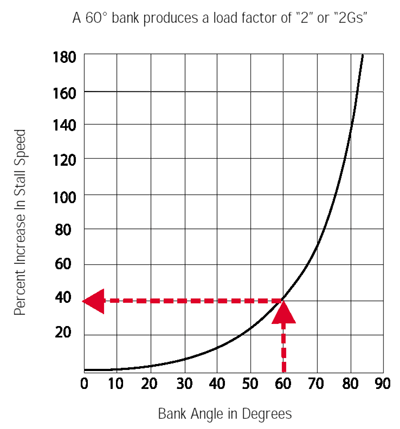This seems a good argumentative question for the board
We all know that stalls occur when the airfoil exceeds the critical angle of attack. But how does that happen? What affects it? Under what conditions can a stall happen when the airplane is not already at low speed? How can the airplane stall at speeds between Vso and say 1.2 times Vso?
Taking a crack at the original question:
In mathmatical terms lift, dynamic pressure (indicated airspeed) and AoA are inseparately related as long as the AoA is in the range from the zero lift angle to a little less than the critical angle of attack. IOW if two are fixed you cannot change the third. That relationship is defined by the equation:
Lift = AoA * pressure * K where K is a constant.
Or trading Pressure for IAS^2 (dynamic pressure is proportional to the square of your indicated airspeed):
Lift = AoA * IAS^2 * K
How does this relate to actual flying? Lift has to be equal to the airplane's weight multiplied by the g-load. When you pull back on the yoke or stick the extra weight you feel is caused by an increase in lift which in turn was caused by an increase in the AoA. If the AoA was near the critical AoA (which never changes unless you modify the wing by moving flaps or contaminating the it with ice etc.) that increase in AoA could take you to that critical angle and wallah, you've got a stall.
Looking at the second equation it should be obvious that at lower indicated airspeeds the AoA
must increase in order to generate the same amount of lift. And equally obvious is the fact that the slower you go the less "room" is left on the AoA vs lift line between the AoA at that lower speed and the critical AoA. Thus if you are flying so slow that you're only a few degrees shy of the critical AoA you don't have to pull very hard on the yoke or hold your vertical speed while banking more than a little you will exceed the critical AoA and stall the wing.
I think Ron already mentioned that when the wing stalls it doesn't stop producing lift completely, in fact it doesn't even drop the lift in half. What happens at the stall break is that the reduction in lift causes the airplane to accelerate vertically (this is what you feel when "the bottom drops out") and that in turn magically reduces the AoA just enough that even though the wing remains stalled, the AoA is actually just a tiny bit higher than the critical angle and all it takes to terminate the stall is a slight additional decrease in AoA.
All that assumes that you've increased the AoA gradually enough that you haven't pitched up appreciably. If you start way below the critical and pull back hard ("whip stall") your angular momentum on the pitch axis makes the AoA go much higher than the critical AoA and you need a much greater change in pitch attitude to get back below the critical angle.
AoA is hard to visualize because you can't see or sense the direction or magnitude of the relative wind. If you get a chance to fly an airplane with an AoA indicator try some maneuvers, changes in airspeed and g-load, plus a few different stalls to see what the wing is really doing.



